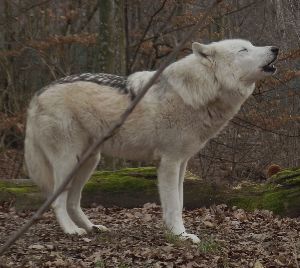Wolf Science Center’s Orchestra
Maria Teresa Basso (intern)
13.03.2020
Little is known about the wolves’ howl but what we do know is that wolves howl to gather the pack, to warn other members of danger, to defend the territory from intruders and to communicate across long distances. In some circumstances, a wolf’s howl can be heard up to 130 km away. Howls can also vary geographically, the ones emitted by European wolves are more melodic and extended than the American ones, which are stronger and with an emphasis on the last syllable. In any case, the two are mutual intelligible, so they are capable of communicating with each other.
On a cold winter morning seeing a wolf howling with its breath that materializes and takes shape into the thin air, you can easily understand why in some cultures these animals were associated with spirits and were thought to be able to communicate with them. In human imagination, a wolf's howl is a beautiful sound, with something ancestral and is capable of touching us in a mysterious way. Sometimes it really is like that... And sometimes not.
People who visit the Wolf Science Center discover soon enough that wolves can also howl pretty badly or really lazily. You can hear Amarok trying to howl and yawn at the same time, resulting in a funny sound, while Yukon is probably trying to communicate with bats or aliens as her voice is on a frequency so high that it is beyond the capability of human hearing. Then we have Una, who makes sounds so strange that they are not even categorizable as howls, and Nanuk who most of the time is too lazy to stand up and howl properly. The strangest of all of them though are Tekoa and Taima, two European wolves, brother and sister, who can howl really beautifully when they want to but most of the time they get overexcited, resulting in an awful sound which seems like a mixture between a hyena, a chicken, and an agonizing jackal. Most of the visitors who hear them get really worried and ask us if it is normal, don’t worry – they are just being silly!
Luckily, we also have some “normal” wolves who can howl properly, Kenai for example has a beautiful deep voice which resonates through the air. Sometimes you can also hear a sad and lonely howl performed by Kaspar, who has unfortunately lost his companions recently and sometimes howls alone in search for them, it is heart-breaking when he doesn’t receive an answer. The funniest thing though, is when dogs step in and try to join the wolves, you can hear Layla for example, with her high-pitched voice, barking and then trying to extend the vocalization in an attempt to howl. The result of all the animals howling with their different voices and “talents” is a unique and extremely funny cacophony, our very unique Orchestra!